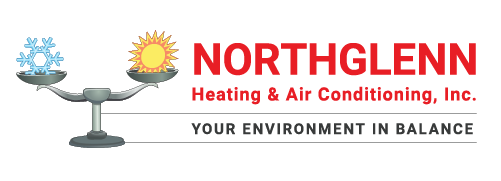
You might not think a lot about how your air conditioner operates, but it needs refrigerant to keep your home fresh. This refrigerant is subject to environmental rules, since it contains chemicals.
Depending on when your air conditioner was installed, it may need R-22, R-410A or R-32 refrigerant. We’ll review the differences and which air conditioner refrigerants are being phased out in Northglenn, as well as how these phaseouts impact you.
What’s R-22 and Why Is It No Longer Being Made?
If your air conditioner was installed before 2010, it possibly contains Freon®. You can discover if your air conditioner has it by reaching us at 303-452-4146. You can also look at the name plate on your air conditioner condenser, which is located outside your home. This sticker will contain details on what model of refrigerant your AC has.
Freon, which is also referred to as R-22, includes chlorine. Scientists consider this chemical to be bad for the earth’s ozone layer and one that leads to global warming. The Environmental Protection Agency, which controls refrigerants in the United States, outlawed its manufacture and import in January 2020.
I Use an Air Conditioner with R-22. Do I Need to Get a New One?
It differs. If your air conditioning is cooling properly, you can continue to keep it. With routine air conditioner maintenance, you can expect your system to last around 15–20 years. However, the Department of Energy reports that substituting a 10-year-old air conditioner could save you 20–40% on summertime cooling expenses!
If you don’t replace your air conditioner, it can cause a problem if you require air conditioning repair down the road, specifically for refrigerant. Repairs can be more expensive, because only limited amounts of recycled and reclaimed R-22 is on hand.
With the phaseout of R-22, a lot of new air conditioners now use Puron®. Also called R-410A, this refrigerant was created to keep the ozone layer in good shape. As it calls for a different pressure level, it isn’t compatible with air conditioners that use R-22 for cooling.
However, Puron still has the likelihood to contribute to global warming. As a consequence, it might also sometime be phased out. Although it hasn’t been mandated yet for residential air conditioners, it’s anticipated sometime this decade.
What Refrigerant Will Take the Place of R-410A?
In preparation of the phaseout, some manufacturers have started using R-32 in new air conditioners. This refrigerant is classified low for global warming potential—around one-third less than R-410A. And it also lowers energy consumption by around 10%, according to the Intergovernmental Panel on Climate Change’s Fourth Assessment Report. That’s savings that might be forwarded on to you through your cooling bills.
Northglenn Heating & Air Conditioning Can Assist with All Your Air Conditioning Needs
In brief, the changes to air conditioner refrigerant probably won’t impact you a whole lot until you need repairs. But as we talked about earlier, refrigerant-related repairs may be more expensive due to the restricted quantities on hand.
Not to mention, your air conditioner typically malfunctions at the worst time, often on the warmest day when we’re experiencing lots of other appointments for AC repair.
If your air conditioner relies on a phased out refrigerant or is aging, we suggest installing an up-to-date, energy-efficient air conditioner. This delivers a trouble-free summer and could even reduce your cooling expenses, especially if you choose an ENERGY STAR®-rated system. Plus, Northglenn Heating & Air Conditioning offers many financing programs to make your new air conditioner even more affordable. Contact us at 303-452-4146 to start now with a free estimate.
